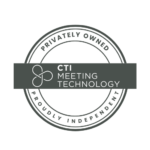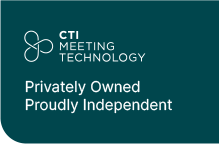A call for papers – or a call for abstracts – is a common practice for STEMM events. As an organizer, you need to start planning the topics and program for the conference at least nine months before the event and communicate it to the right audience. A successful call for papers will attract quality abstract submissions and provide better event content.
However, connecting with these researchers or academics is not always easy. Organizers need to ensure their message stands out and communicates the event goal to get a response.
Just think about all the spam and promotional messages in your inbox. Your submitters are also swamped by dozens of emails and similar organizations trying to reach them. These individuals will have to navigate a sea of emails that require their attention, and your call for papers needs to be one of them!
So, how can you make sure your message gets across? Well, keep reading to discover some tips on how to design a better call for papers:
Crafting A Compelling Call For Abstracts
The first step to crafting a successful call for papers is constructing a clear message. Your recipients get tons of emails every day, so you need to make sure to keep it clear and concise. But that doesn’t mean it has to be boring! In fact, you need to attract their attention to make your message stand out.
It’s a bit like applying for a job. You should “sell” yourself and your organization in an informative and catchy email. Write a powerful subject line that explains why you’re contacting them and includes a call to action. For example, the subject “Last Call to Submit to Molecular Biology Conference 2024″ clearly states the goal of the email.
Keep the message under 300 characters and include only general information about the conference. Once you grab their attention, add a link to a landing page where they can check the submission guidelines and specific submission requirements.
You might not get a response the first time; your recipients might be away from the office, or their inbox might be full. Try to send at least three or four emails to stay top of mind, but don’t overdo it! Otherwise, your approach will look spammy, and these academics won’t want to participate in your conference.
To manage large lists of recipients and their answers, tools like Mailchimp can be helpful. These tools help personalize messages and track open rates and CTR to adapt your communication strategy.
Event software can also be helpful to craft tailored messages and quickly manage RSVPs. The communication system in cOASIS allows organizers to create a campaign with multitiered emails according to actions. If a recipient opens the first email but does not upload their paper, they will get a reminder until they complete the action. By streamlining this process, you can ensure your participants receive the information they need at all times.
Here are some other easy-to-implement (but powerful) tips to ensure a strong call for papers:
- Make the submission process easy: Your submitters are busy people. The easier the submission process is, the more submissions you might get. Include a direct link to the submission Portal.
- Be clear about the guidelines: When is the deadline? Do they have to be onsite to present if their work gets accepted? Is there a word limit? Provide all this information upfront to avoid wasting time and resources on submissions that don’t fit the requirement. Luckily, some meeting software platforms won’t accept submissions that don’t fit the client’s requirements.
- Clearly communicate the review process: Reviewing conference papers is not an exact science. Communicate the review process for your conference so submitters know how their papers will be evaluated.
- Use bullet points: Your message should be easily scannable. Most people will spend only a few seconds reading, so check all the information is structured so the reader can easily access it even without reading all the text.
- Offer open communication: Your participants might still have lingering questions. Include which communication channels they can use if they need to know more about the event, the submission process, or your organization. Don’t forget to include how they will be notified if their abstracts were accepted or rejected!
Promoting Your Call For Abstracts Effectively
But just sending out an email campaign is not enough anymore!
Leverage other channels like the event website and social media to spread your message and reach a larger group. We have already discussed leveraging social media for event promotion; the same goes for your submissions call.
Researchers and academics use LinkedIn and Twitter to network and stay up-to-date on their fields. Once you choose a social media channel, strategize, then start posting.
And because you want to reach as many people as possible, involve your sponsors in your social media efforts as well! Chances are, your followers and theirs are interested in the topic of your conference. In general, you want to stay top of mind and make sure submitters are aware of the deadlines.
Reviewing and Selecting Abstracts
Establishing a structured review process is mandatory to give your reviewers clear guidelines. How are you overall rating the quality of the papers? Which parameters are you choosing?
Innovation might be the most pressing factor for some reviewers, while others might favor well-conducted research. It is your duty as an organizer to establish the parameters that need to be reviewed and how to review them. One option can be offering a 0 to 5 scale, 0 meaning “it doesn’t fit the parameter” and 5 meaning “it perfectly fits the parameter”. This ensures a simple and fair review process for reviewers and submitters.
Gathering a diverse set of panel reviewers from different backgrounds and industries is vital. That’s the only way to make sure that minority researchers get fair treatment as well. Consider blind peer reviewing so there are no conflicts of interest between the submitter and reviewer.
And just like teachers do after a test, ensure reviewers have a space to leave comments and constructive feedback to all submitters. There’s no worse feeling than spending valuable time and effort on a paper that gets rejected without a reason.
Ensuring Post-Submission Support and Communication
So you crafted a stand-out call for papers and received high-quality submissions? Congratulations! However, if you want to go the extra mile and make sure that these submitters come back to your future events, there are a few things you can do about it.
Keep submitters informed throughout the process. This can be automated with event software, so your submitters can get specific notifications on whether their abstract gets accepted. If timelines change, actively communicate these changes by providing updates. Again, with the right event technology, organizers do not need to waste time on these tasks as they can be easily automated. Account for as many scenarios as possible and open a line of feedback and communication with your submitters.
An Email Template For You
Email Subject Line: Submit Your Abstract For (Name of Conference)
Dear (Recipient Name),
It is our pleasure to extend this invitation to (Conference Name), taking place onsite in (Location) on (Date). This year, we are excited to hear your thoughts on the theme of (Conference Theme).
Possible Topics:
- Topic 1
- Topic 2
- Topic 3
Guidelines:
Authors are invited to submit their latest research findings and case studies aligned with the conference theme and topics of interest. You can access the abstract submission Portal by clicking on the following link: (Link to Submission Portal).
- Abstracts: up to 1500 words; figures are allowed, but each figure counts as 200 characters
- Late-Breaking Abstracts: up to 300 words, no figures allowed
For detailed guidelines about the submission format, please visit our website: (Link to Guidelines Page).
Important Dates:
- Submission Deadline: (Deadline Date)
- Acceptance/Rejection Notifications: (Decision Date)
Review Process:
We ensure a fair and thorough review process to ensure the quality of all the abstracts presented at the event. A blind review process will be used to evaluate all submissions.
Next Steps:
- Use the link above to submit your abstract through the Portal.
- You will receive a notification before (Deadline) to let you know if your application was successful.
- In the meantime, you can reach out to (Email Address) if you have any questions or doubts during the submission process.
We look forward to receiving your valuable insights for (Conference Name)!
Best regards,
(Name of General Chair)
(Conference Name)
Wrapping Up…
We are sure that by following these tips, you will be able to prepare a compelling paper call for your upcoming conference. Don’t rush; take your time to create a strong message and use reliable abstract management software to help you communicate. By collecting high-quality abstracts, you’re closer to hosting an unforgettable event.






